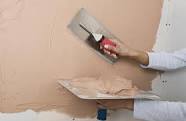The History of Plastering
Plasterwork is one of the most ancient of handicrafts employed in connection with building operations, the earliest evidence showing that the dwellings of primitive man were erected in a simple fashion with sticks and plastered with mud. Soon a more lasting and slightly material was found and employed to take the place of mud or slime, and that perfection in the compounding of plastering materials was approached at a very remote period is made evident by the fact that some of the earliest plastering which was remained undisturbed excels in it's scientific composition that which we use at the present day.
The pyramids in Egypt contain plasterwork executed at least four thousand years ago, probably much earlier, and yet existing, hard and durable, at the present time. From recent discoveries it has been ascertained that the principal tools of the plasterer of that time were practically identical in design, shape and purpose with those used today. For their finest work the Egyptians used a plaster made from calcined gypsum just like plaster of Paris of the present time, and their methods of plastering on reeds resemble in every way our lath, plaster, float and set work. Hair was introduced to strengthen the stuff, and the whole finished somewhat under an inch thick.
Very early in the history of Greek architecture we find the use of plaster of a fine white lime stucco, such has been found at Mycenae. The art had reached perfection in Greece more than five centuries before Christ, and plaster was frequently used to cover temples externally and internally, in some cases even where the building was of marble. It formed a splendid ground for decorative painting, which at this period of Grecian history had reached a very high degree of beauty.
The term plaster can refer to gypsum plaster (also known as plaster of Paris), lime plaster, or cement plaster. Plaster is a building material used for coating walls and ceilings. Plaster is manufactured as a dry powder and is mixed with water to form a paste when used. The reaction with water liberates heat through crystalisation and the hydrated plaster then hardens.
Plaster can be relatively easily worked with metal tools or even sandpaper.
These characteristics make suitable for a finishing, rather than a load bearing material.
Plaster Finishes :
- Wood float
- Sponge float
- Steel float
- Scratch plaster
- Brush plaster
- Bagging
| Back | Back to top |




















































